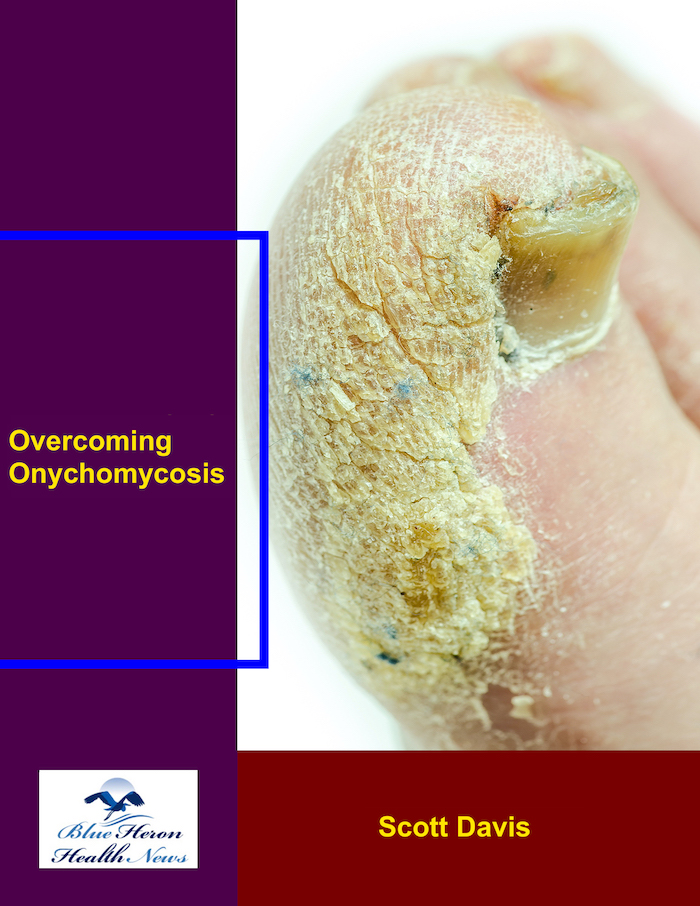
Overcoming Onychomycosis™ By Scott Davis If you want a natural and proven solution for onychomycosis, you should not look beyond Overcoming Onychomycosis. It is easy to follow and safe as well. You will not have to take drugs and chemicals. Yes, you will have to choose healthy foods to treat your nail fungus. You can notice the difference within a few days. Gradually, your nails will look and feel different. Also, you will not experience the same condition again!
What are the environmental risk factors for onychomycosis?
Environmental risk factors for onychomycosis, a fungal infection of the nails, play a significant role in increasing the likelihood of fungal growth and infection. These factors are typically related to exposure to fungi in the environment and conditions that promote the growth of fungi. Here’s a breakdown of the environmental risk factors for onychomycosis:
1. Moist and Warm Environments
- Fungi thrive in moist, warm environments, which are ideal conditions for the growth of dermatophytes, yeasts like Candida, and molds like Aspergillus.
- Common environments that foster moisture and warmth include:
- Swimming pools (public or shared pools)
- Locker rooms (especially in gyms or spas)
- Public showers (especially in shared or communal settings)
- Wet workplaces (such as kitchens or laundry rooms)
2. Frequent Exposure to Water
- Occupations or activities that require frequent immersion of hands or feet in water, such as dishwashing, swimming, farming, or healthcare work, increase the risk of onychomycosis.
- Prolonged exposure to water softens the nails and surrounding skin, making them more vulnerable to fungal invasion.
3. Use of Public or Shared Footwear
- Shared footwear or protective footwear in communal spaces, such as gym showers, swimming pools, and locker rooms, increases the risk of fungal transmission.
- Wearing closed-toe shoes or wet shoes for extended periods can create a humid and dark environment that promotes fungal growth.
4. Poor Ventilation in Footwear
- Wearing non-breathable shoes (e.g., rubber boots, tight-fitting shoes, or synthetic material shoes) can trap moisture and heat around the feet, encouraging fungal growth.
- People who wear tight shoes or those made from non-porous materials that don’t allow airflow to the feet are at a higher risk.
5. Living in Humid Climates
- Hot and humid climates increase the likelihood of fungal infections because they promote sweating and moisture accumulation, which encourages the growth of fungi.
- In tropical or subtropical regions, individuals may have a higher risk of onychomycosis due to the constant exposure to humid conditions.
6. Contact with Soil or Organic Matter
- Occupations or activities that involve regular exposure to soil, decaying organic matter, or plant material (e.g., gardening, farming, or forestry work) expose individuals to environmental molds and fungi that can infect the nails.
- Fungal spores from soil or decaying plant matter can easily enter through broken skin or nail trauma, causing infection.
7. Climate Change and Increased Temperature
- Rising global temperatures and increased humidity levels may contribute to the growth of fungi and a higher incidence of fungal infections, including onychomycosis.
- As temperatures increase, the frequency of infections from molds, dermatophytes, and other fungi may rise in certain areas.
8. Poor Hygiene in Public Spaces
- Lack of proper hygiene in public spaces such as gyms, showers, and public restrooms can create ideal conditions for fungi to spread.
- Fungal infections are more likely to occur when people share surfaces, towels, or other personal items in environments that are not cleaned or disinfected properly.
9. Overcrowded Living Conditions
- Overcrowded living conditions with poor access to hygiene facilities can increase the likelihood of fungal transmission, particularly in communal housing settings like dormitories or prisons.
- Shared bathrooms or communal showers without adequate sanitation can lead to an increased risk of fungal infections.
10. High Exposure to Fungal Spores
- Individuals who frequently expose themselves to airborne fungal spores in occupations such as construction, woodworking, or farmwork are at risk for fungal infections, including onychomycosis.
- Certain fungal spores found in materials like wood, hay, or straw can infect the nails, especially when there is skin damage or trauma.
11. Artificial Nail Use in Public Salons
- Artificial nails or nail enhancements applied in salons may increase the risk of onychomycosis if proper hygiene is not maintained.
- Improper nail care, tools that aren’t disinfected, or a tight fit of the artificial nails can cause trauma to the nail bed and allow fungal organisms to enter.
- Nail salons with inadequate ventilation or sanitation may increase the risk of fungal infections, as fungi can spread from one person to another through shared tools.
Conclusion:
Environmental factors play a crucial role in the development and spread of onychomycosis. Moist, warm environments, frequent exposure to water, and lack of hygiene in public or shared spaces create ideal conditions for fungi to grow and infect the nails. People with high exposure to these environments, such as those who work in humid climates, water-related professions, or public recreational spaces, should take precautions to minimize the risk of onychomycosis. Proper nail care, wearing breathable footwear, and practicing good hygiene can help reduce exposure to environmental risk factors for fungal nail infections.
Overcoming Onychomycosis™ By Scott Davis If you want a natural and proven solution for onychomycosis, you should not look beyond Overcoming Onychomycosis. It is easy to follow and safe as well. You will not have to take drugs and chemicals. Yes, you will have to choose healthy foods to treat your nail fungus. You can notice the difference within a few days. Gradually, your nails will look and feel different. Also, you will not experience the same condition again!